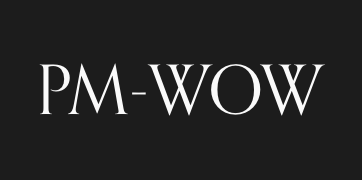Status Reports
Mastering Project Status Reports: Best Practices for Clear, Concise Updates
Introduction
Project status reports are one of the most critical tools for successful project management. They provide stakeholders with clear visibility into progress, highlight issues early, and align teams on shared goals. But not all status reports are created equal. Done right, they can drive decision-making and confidence. Done poorly, they can confuse, mislead, or waste valuable time.
Whether you’re a seasoned project manager or new to the role, here are best practices to ensure your status reports are effective, efficient, and impactful.
1. Know Your Audience
Tailor your report to the stakeholders who will read it. Executives want high-level summaries and business impact. Team members may need detailed task updates. Know who needs what — and format accordingly.
Tip: Consider multiple versions of the report: a brief summary slide for leadership and a more detailed version for the project team.
2. Stick to a Consistent Format
Using a standardized format allows stakeholders to easily digest the report, track trends over time, and focus on key metrics. A consistent structure might include:
Project Overview
Summary Status (RAG - Red, Amber, Green)
Key Accomplishments
Upcoming Tasks
Risks and Issues
Budget and Timeline Overview
Pro Tip: Use visual indicators like RAG status, charts, or progress bars for instant readability.
3. Be Honest and Transparent
It's tempting to paint a rosy picture — especially when things aren’t going smoothly — but candor is crucial. Flag issues early, describe mitigation plans, and show ownership. Hiding problems delays solutions and erodes trust.
Remember: Leaders appreciate proactive problem-solvers, not perfect project fairy tales.
4. Highlight Key Metrics
Quantify progress wherever possible. Use KPIs (Key Performance Indicators) like:
% of tasks completed
Budget spent vs. allocated
Timeline adherence (e.g., milestones met on schedule)
Risk severity and impact
This turns a subjective update into an objective progress tracker.
5. Keep It Concise
A great status report should be digestible in 5 minutes or less. Avoid excessive narrative or unrelated detail. If stakeholders need more depth, provide links or attachments to supporting documents.
Rule of thumb: If it doesn’t inform, support a decision, or reveal a risk, it probably doesn’t belong.
6. Use Visuals Wisely
Visual aids such as Gantt charts, dashboards, or milestone trackers help stakeholders grasp complex data at a glance. But don’t overdo it — cluttered visuals defeat the purpose.
Best Practice: Use visuals to complement, not replace, your commentary.
7. Update Regularly and Timely
Set a regular cadence — weekly, bi-weekly, or monthly — and stick to it. Late reports reduce credibility and diminish relevance. A consistent schedule builds trust and accountability.
8. Document Risks and Dependencies
Every project has unknowns and interdependencies. Clearly note any risks, blockers, or required actions from stakeholders. Make it easy for readers to see where help or decisions are needed.
Call to Action: If something requires attention, spell it out explicitly: who, what, and by when.
9. Review Before Sending
Errors undermine professionalism. Review your report for accuracy, spelling, and completeness before distributing. Consider having a peer glance at it for clarity and tone.
10. Archive and Track Changes Over Time
Keep a record of past reports. This creates a trail of accountability and helps spot trends — such as recurring issues or chronic delays. It also helps with lessons learned at project closeout.
Conclusion
A well-crafted project status report is more than an update — it’s a leadership tool. When done with clarity, consistency, and honesty, it keeps stakeholders informed, teams aligned, and projects on track. Start applying these best practices in your next report, and you’ll not only improve communication but elevate your reputation as a project leader who delivers with confidence and transparency.
